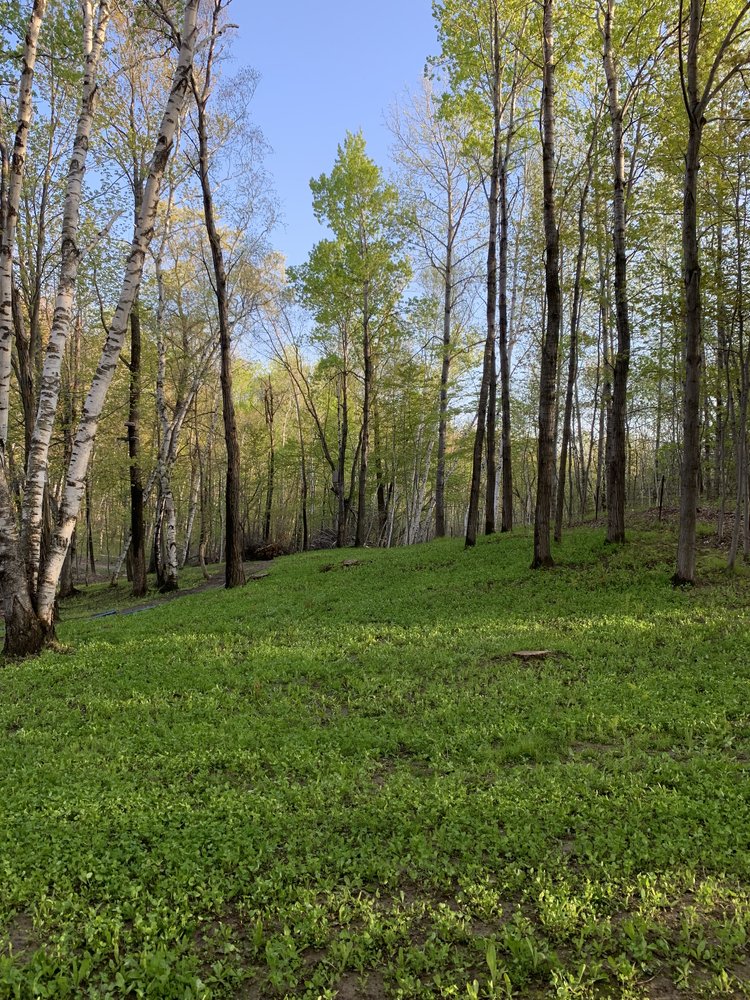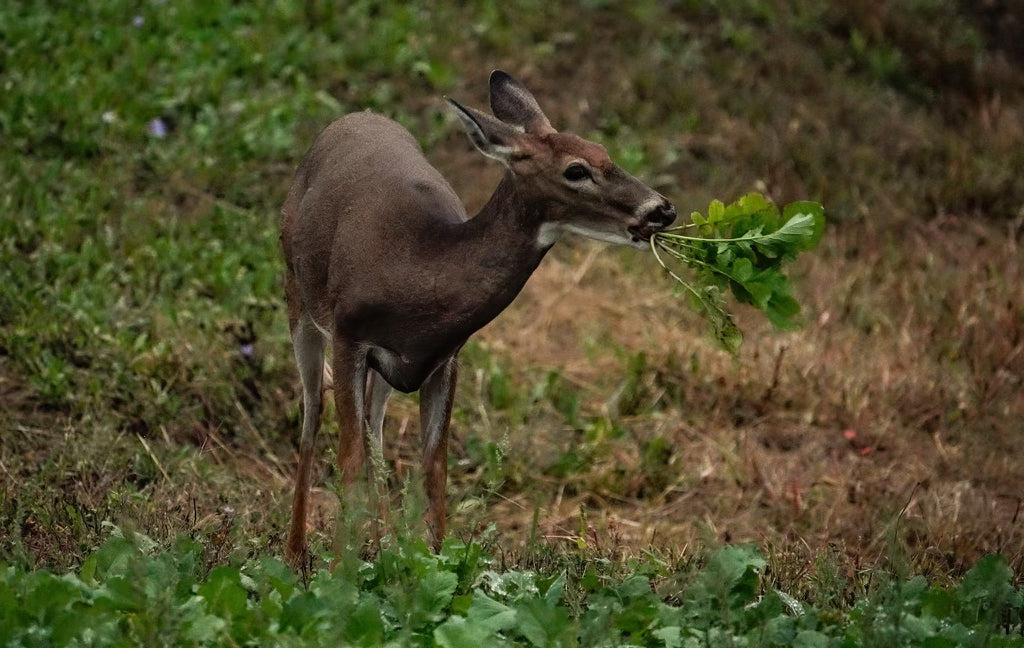There is a lot of buzz in the whitetail community surrounding “Frost Seeding”, as it can be a great way to economically plant cold season perennials on your property with out the need for tilling or use of heavy equipment. While frost seeding can be as simple as it sounds, there are some important factors to consider, ensuring your frost seeding investment pays dividends.
Where to Begin
When setting up a property to help provide year-round food for your resident deer and turkey you should consider planting ½ of your available food plot acreage in annuals and ½ in perennials. Depending on location, perennials can be planted in the spring or fall through several types of planting applications (Frost Seeding, Tilling, No Till, etc.). One of our favorite methods is Frost Seeding. Frost seeding can be as simple as it sounds, broadcasting seed on top of frozen soil/snow to let Mother Nature help naturally “plant” the seeds for Spring germination. Minimal equipment is required to successfully complete the Frost Seeding Process, all you need is the correct food plot seed mix, a location that is “ready for seed” and an understanding of When and How to do it.
How it Works
Frost Seeding is a practice that takes place in the late Winter or early Spring as the soil is going through a Freeze-Thaw-Freeze-Thaw cycle that causes the soil to expand and contract, naturally “pulling” the seeds in and creating suburb seed to soil contact – without the use of heavy equipment or tilling.It is best suited for areas that are bare of competition or debris with plenty of exposed dirt or areas that have been over-grazed.It’s that simple…the expansion and contraction of the soil causes tiny “cracks” for the broadcasted seed to settle into and the tiny, hardy seeds will wait patiently for soil and air temperatures to increase, allowing germination to soon follow.
The Frost Seeding Food Plot Process
While the practice of Frost Seeding a food plot is not difficult, in order to ensure success, you need to understand the What, When, Why, Where and How to do it. So that’s where we will begin…
WHAT:When frost seeding you need to be careful on “WHAT” you are planting and our recommendation is to only frost seed cold season perennials like Clover and Chicory, our favorite Domain mixes for frost seeding are Comeback Kid and Hot Chic.
WHEN:The best time to frost seed your cold season perennials is late Winter or Early Spring when the weather pattern calls for a period of freeze-thaw-freeze-thaw temperatures. Where it freezes at night and thaws during the day. This will cause the ground to expand and contract and help naturally “pull” the seeds into the soil, where they will wait for favorable air and soil temperatures to germinate.
WHY: Frost seeding offers a great way to establish an early Spring stand of high protein perennials that will green up before Mother Nature provides any other vegetation without disturbing the soil through disking or tilling. Since no weed seeds are unearthed during the tilling process, it also helps the slower growing perennials to establish with little competition from weeds. Lastly, it is a great way to plant tiny perennial clover seeds without the risk of burying.
WHERE: First, you will need an area that is “ready for seed”. This can be a pre-existing clover or chicory plot you are looking to thicken up, an area that was prepped last fall and is void of weeds, competition or debris or last year’s brassica plot that has been over grazed by deer, exposing the soil for good seed to soil contact. You cannot just broadcast seed into an overgrown area of your property and expect it to be successful, so be careful when selecting your location to make sure it fits the desired application.
HOW: This is the easiest part, as you simply broadcast the seed on the frozen soil or last remaining remnants of snow on the plot.Typically, when frost seeding, I will use 1.5 to 2 times the seed rate to ensure enough seeds achieve appropriate soil contact, as there is the likelihood during the frost seeding process some seeds will be deterred by dead plants or debris, never having the chance to germinate.Once the entire plot has been seeded, it’s time to let Mother Nature do her thing!
The Domain Choice
When it comes to frost seeding cold season perennials we focus on two of our favorite mixes, Hot Chic and Comeback Kid, both of these mixes are comprised of a hardy combination of cold season perennials perfect for frost seeding. The specific varieties of White and Red Clover, Chicory and Alfafa have been chosen for their hardiness, longevity, soil tolerance, protein levels and attractiveness to deer and will provide a foundational food source on your property for many years to come.
Final Advice
Frost Seeding can be an excellent and inexpensive way to establish year-round food on your property without using heavy equipment to do so, just make sure the area is ready for seed and the appropriate type of seeds are selected. Once you have the perfect spot and food plot mix picked out, just wait for the Spring thaw to begin, and give it a try!
Happy Planting,
Mike Lindahl
Page created using Blog & Page Builder by Reputon













